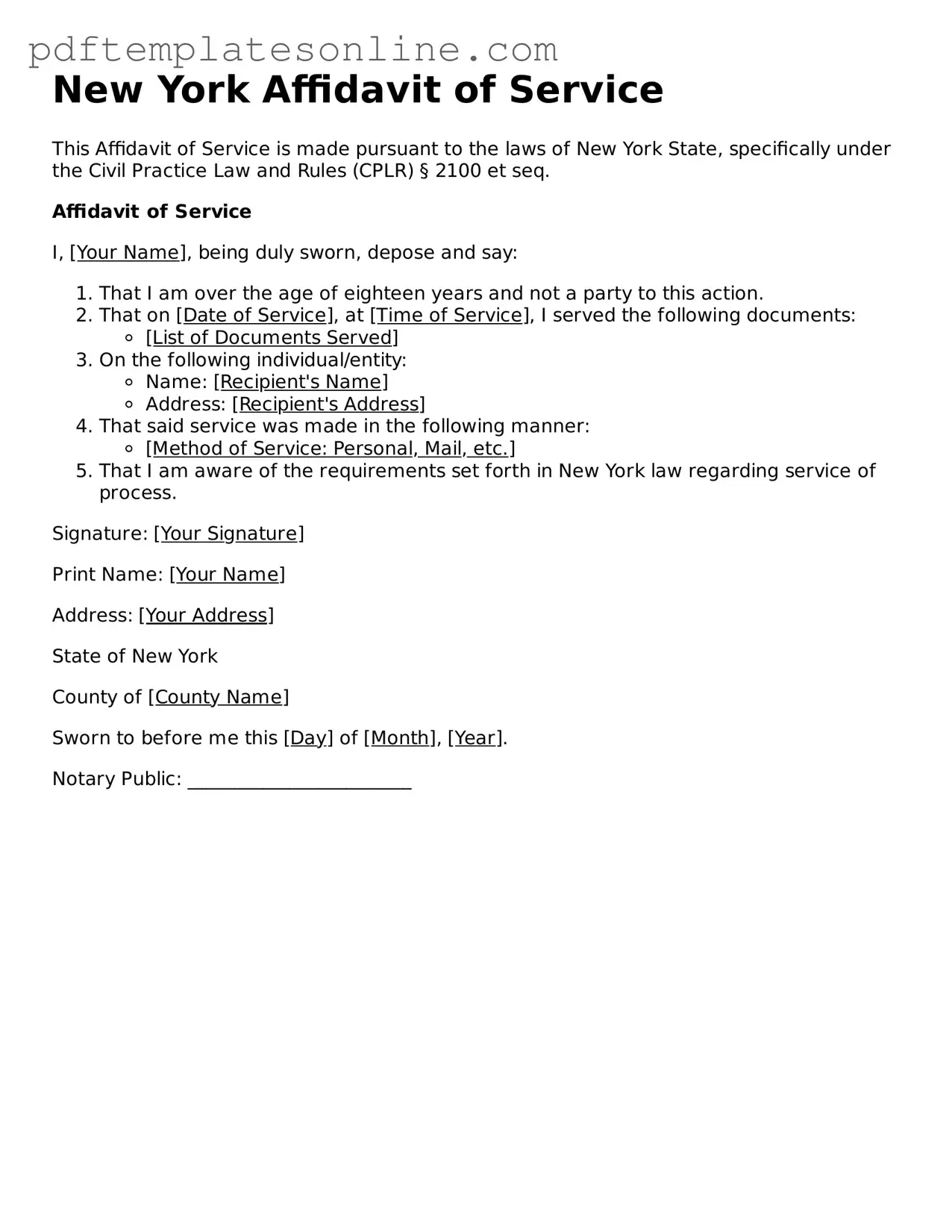Filling out the New York Affidavit of Service form can be a straightforward process, but many people make common mistakes that can lead to delays or complications. One frequent error is failing to include the correct date of service. The date must accurately reflect when the documents were served. If this date is incorrect, it could undermine the validity of the service.
Another common mistake is not providing sufficient details about the person served. The form requires specific information, such as the name and address of the individual. Omitting these details can create confusion and may result in the court rejecting the affidavit.
People often forget to sign the affidavit. A signature is essential to validate the document. Without it, the affidavit lacks legal standing. Additionally, some individuals neglect to have the affidavit notarized. A notary's acknowledgment is crucial, as it verifies that the person who signed the document did so in front of a certified official.
Inaccurate descriptions of the method of service can also cause issues. The affidavit must specify how the documents were delivered, whether in person, by mail, or through another method. Misrepresenting this information can lead to questions about the service's legitimacy.
Another mistake occurs when individuals fail to provide their own contact information on the form. Including a phone number or email address can facilitate communication if the court or other parties have questions regarding the service.
Some people overlook the importance of filing the affidavit promptly. Timeliness is crucial in legal matters. Delaying the submission can hinder the progress of the case and may even result in missed deadlines.
Furthermore, individuals sometimes do not keep a copy of the completed affidavit for their records. Retaining a copy is wise, as it serves as proof of service and can be useful in future proceedings.
Lastly, misunderstanding the requirements for serving different types of documents can lead to errors. Each type of legal document may have specific rules regarding service. Familiarizing oneself with these requirements can prevent mistakes and ensure compliance with legal standards.
